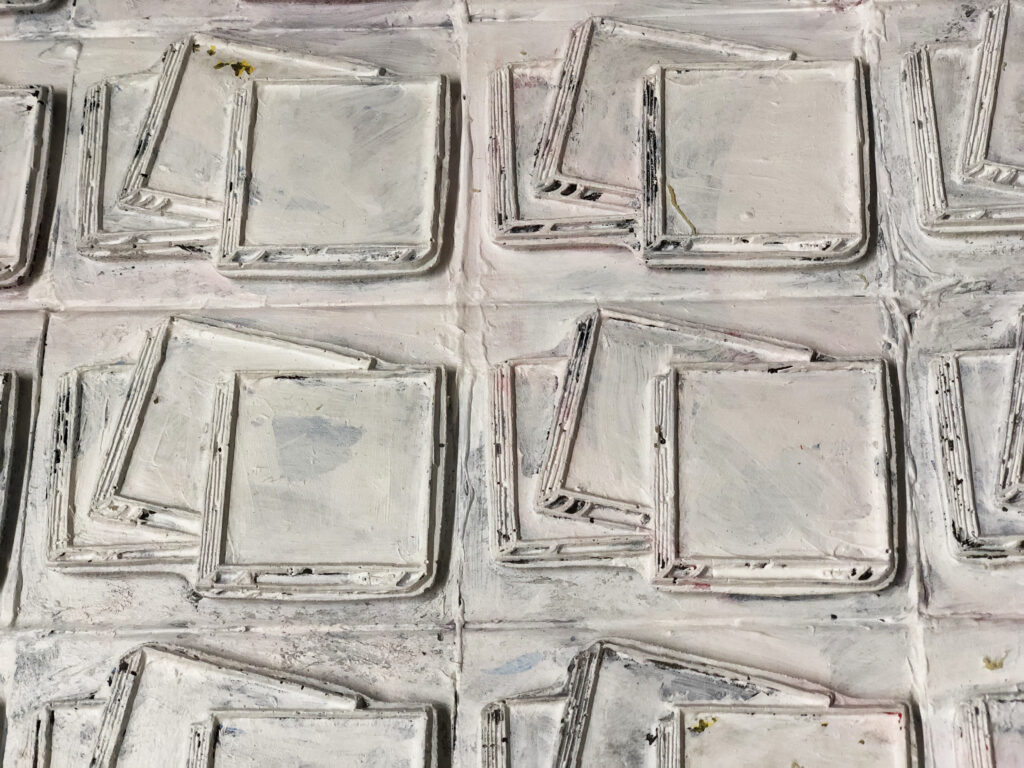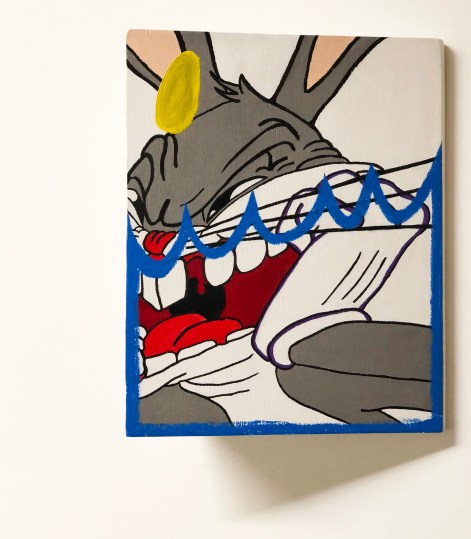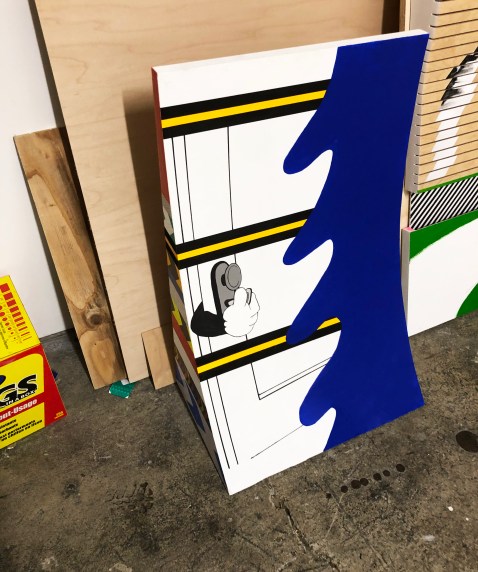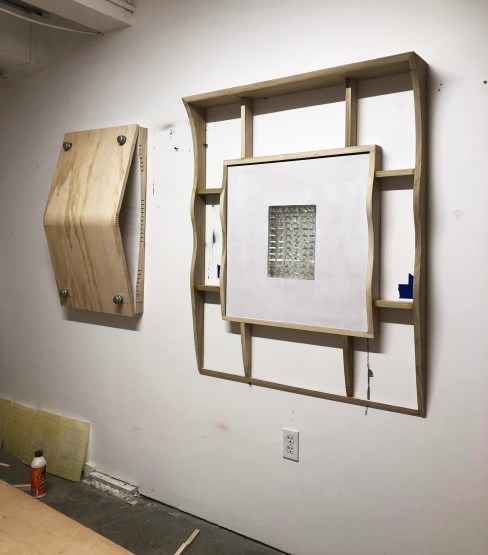
By Alicia McDaniel, Exhibitions Fellow
For the month of March, the Frank Ratchye Project Space will be showcasing Studio Artist Zach Searcy’s stimulating paintings. Concerned with class difference, accessibility, exclusivity, and societal complacency Searcy’s work challenges viewers to engage in critical self reflection.The artist has cleverly repurposed material objects of value working them into frames, canvases, and embellishments for his skillful depictions of cartoons.The incorporation of these nostalgic images in conjunction with Searcy’s masterly warping of his paintings’ structure reinforces a playful yet somber call to action.
Read more about Searcy’s practice, thoughts on painting, the wealth gap, and his work in our interview below.

Alicia McDaniel (Exhibitions Fellow): Your skillful renderings of the cartoon characters in your paintings remind me of the Cel animation style. Does animation have an influence on your work?
Zach Searcy (Studio Artist): As a child, the first thing I ever wanted to be when I grew up was a cartoonist. I became disinterested when I realized that the industry had shifted to working on a computer. These characters have only recently, and somewhat unexpectedly, started to make their way back into my work. This new work is less about animation, and more about cartoons. I think there is a lot of dark humor to tap into.
AM: What is your relationship to these characters, such as Bugs Bunny, that show up in your work? When and why did you decide to incorporate these American icons?
ZS: I felt like Bugs was a good middle character for people to reflect off of. He is tricky, somewhat mean, but never seen as the villain. He never gets caught by the multitude of antagonists that come his way. You could say a lot of icons or powerful folks have the same privilege!
AM: I recall you mentioning that themes of your work include urban symbolism, capitalist critique, and class accessibility. Can you expand on how this new body of work challenges or engages with these ideas?

ZS: It’s evident the systems that propagated this wealth gap have created unfair circumstances for most folks in a variety of ways. ‘Life’s not fair’ and ‘pulling yourself up by your bootstraps’ are mantras that are systemically indoctrinated in many of us at a young age which creates a disease of more. Currency has been consolidating for a long time, and it’s good business for those with money and power to have our self worth tied to us thinking we have to be a strong performer on what is a very tilted playing field.
AM: A striking element within this body of work is your usage of cobalt blue. This bold color places emphasis on the bodies of water that are depicted throughout the series. Is this inclusion of water an environmentalist critique or symbolism for another concept?
ZS: It’s just so blue. I think it’s what I would have imagined the color of water to be in my childhood fantasy view of the world. I’m interested in water right now as it is the thing that allowed life to develop on this planet, but it is also the thing that will so indifferently take it back if we don’t straighten up.

AM: I was really touched by a personal experience you have shared about how your perception on painting changed. Would you mind elaborating on this life-changing event again?
ZS: I had a back injury that prevented me from working in the studio for nearly a year. This period overlapped with the 2015 primaries and 2016 election cycle. There were several days of laying on the couch in pain, watching the news, and reading internet comment sections. Parallels started to emerge between my body and our country being leveraged by pain. I was no longer interested in creating work that served as a window to take the viewer somewhere else. My focus shifted towards making work that was more present and aware of itself as an object adjacent to the viewers body.
AM: Can explain how your choice of materials reject this notion of traditional painting?
ZS: One day I was laying in bed looking at my plastic laundry basket and it occurred to me that, like acrylic paint, it’s just hardened plastic. Physically, the laundry basket became just as much a painting to me as any other painting. This realization allowed me to feel okay about demystifying painting in my head. Being self trained, I already cringed at the fact that the art world came up with the term “outsider artist,” so realizing the materiality of paint really freed me to just make what I want to make.
AM: How has your work changed throughout your time at Root Division?
ZS: This is my first body of work at Root Division. Having access to affordable space and a wood shop has empowered me to execute my ideas about painting more fully.
AM: Do you have any upcoming shows or projects that you would like mentioned?
ZS: I do not have any upcoming shows but I am excited about what I plan to make next!
